The Big 5, soon to be The Big 4.
Hello fellow Steemians, and welcome to my second blog!
I recently watched a documentary on Netflix, a BBC series called Africa. I would highly recommend that everybody who has access watch it, it is truly brilliant. They take you on a journey all over Africa, filming the most incredible wildlife footage I have ever seen. There was one particular part of an episode that I most enjoyed though, and this was of Black Rhinos gathering under the starlight at a watering hole in the Kalahari. They did this using the latest ‘starlight camera’, something I am keen to research, the images were amazing!
This was the first time this behavior has ever been filmed. Nobody had any idea that rhinos could be such social creatures, up until then they were mainly regarded as the most cantankerous member of the South African wildlife population, being solitary creatures that nobody dared mess with. However, what happens under the starlight is something altogether different. About 20 rhinos gather, male and female, travelling from all over the Kalahari to meet with absolute punctuality at a very precise location. Their navigation skills alone are mind blowing. From there, they become playful and flirty, with the ladies being the most promiscuous! Soon a big bull enters the fray, and a young female takes a big liking in him. She hops around him and nudges him with her snout and shakes her tail but it is sadly done in vain. The bull shows absolutely no interest in her despite her efforts, he dodges and ignores her and eventually lies down and pretends to sleep in order to get her to leave him alone. All around this pair there are small groups of rhino standing around doing what appears to be chatting, calves are chasing each other like playful 500 kilogram puppies and families are greeting each other with rhino kisses on the mouth. Imagine a rhino kiss! This gathering is something like you’ve never seen before. All 50 tons of it.
And then, when the sun comes up they all head their separate ways, to meet again one day soon. Or not.
South Africa is the hub of the rhino world, with 18,796 white rhinos (93% of global population) and 1,916 black rhinos (40% of global population) as of the last estimates at the end of 2015. In the mid-1990s, the white rhino population was somewhere between 20 and 50 individuals. It is clear that an unbelievable effort was made to save these animals, having multiplied the population by 10,000 times in just 15 years. Efforts made in the private sector have largely been acknowledged for this success, with about a quarter of South Africa’s rhinos being privately owned. However a great incentive for private owners are the lucrative rewards gained from trophy hunting, a practice started in the 1960’s, with about 50 rhino per year since being hunted, ‘for sport’.
In 2005 however, there was a massive change in the demand for rhino horn, especially from Asia. Rhinos were placed on the Appendix II listing of CITES in 1994, as critically endangered, with sport hunting being an exemption. CITES (the Convention on International Trade in Endangered Species of Wild Fauna and Flora) is an international agreement between governments which aims to ensure that international trade in specimens of wild animals and plants does not threaten their survival. There was a large spike in the amount of hunters coming from Asia, with the so called “pseudo-hunting” being a legal way to export rhino horn out of the country. This was followed by theft and armed robberies of horns from game reserves with stockpiles across South Africa, as well as from museums, with 65 horns being stolen since 2007. These crimes also spread to Europe and the U.S, with at least 50 horns being stolen there since 2007.
Since 2008 though, rhino poaching has become a sickening virus that has invaded our land, with over 5,000 rhino being poached since then. The graph below shows the alarming rise.
Rhino horn fetches around $60,000 per kilogram on the black market, with horns weighing an average of 3-4 kilograms each. In traditional Chinese medicine the horn is shaved and ground into a powder, then dissolved into boiling water and is drunk by the patient. This is meant to cure ailments like headaches, nausea, snake bites, devil possession, typhoid and hallucinations. Make no mistake: people who use the horn in their medicine truly believe it works, as surely as a Christian believes in Jesus. In the West there is a belief that rhino horn acts as an aphrodisiac and sexual stimulant, but this is completely incorrect.
Ann and Steve Toon commented in 2002, “For practitioners of traditional Asian medicine, rhino horn is not perceived as a frivolous love potion, but as an irreplaceable pharmaceutical necessity.” The current trend however seems to be more of an emotional attachment than a medicinal one, people who use the horn are highly successful individuals who want to show their status amongst their peers. It is even being gifted to family members and business colleagues and people in positions of authority, only as a gift though, not for any medicinal use.
Studies have shown though that there are absolutely no medical benefits whatsoever from rhino horn, and that they are made of exactly the same stuff your finger nails are. Imagine that, your finger nails are made from stuff that is worth $60,000 a kilogram.
A huge effort has been made to curb the poaching of rhino, but figures for 2016 sit at over 700 rhino killed so far. This has become an all-out war between poachers and conservationists, with mercenaries from all over the world even being hired to fight for our animals. Many of the poachers are people who live in rural areas and working for local syndicates, earning a mere pittance compared to the kingpins at the top. They are not even skilled hunters, and will do anything to make sure they get away with a horn, not caring at all about the devastation caused to these animals. They shoot the animal in the head or legs to disable it, and roughly chop the horn off using an axe.
Despite all the efforts made over the years and all the various charities that have been established to save the rhino it seems as though people have forgotten about this fight, whereas it is far from over. There are definitely people out there that have dedicated their lives to this war, but there are not nearly enough. They have tried many alternative methods than tackling poachers head on though, like having rhinos dehorned or treating the horn with dye or even poison. There was a very tragic case in 2012, during a demonstration of how the dye can be administered to a rhino, where the rhino died due to the vast complications that can arise when immobilizing them completely using anesthetics. Besides this, the cost implications for doing it on the scale necessary are enormous.
As you can see in this terrible picture, rhinos are sometimes not even killed before their horns are removed:
The rhino will still try to get up and run for safety, being completely disorientated and in what can only be agonizing, unbearable pain. If it is fortunate enough to be found by conservationists, they are normally euthanized immediately. Otherwise they will be out in the wild with these terrible wounds, trying to breathe through the hole that has been left in their face. This is one of the most heart wrenching things I have ever had to try and comprehend.

Image credit
I am using this platform to try and create more awareness of this problem around the world, people need to know what is happening and try to make any effort they can to stop what is happening. The only way we can change this is to fight it together, as a global community. We as humans are capable of such terrible destruction and hatred, but I believe far more capable of being able to stand together and do wonderful things when we do. The rhino has been around for about 40 million years, and if we don’t act soon we will wipe them out completely:
Please share this post and get more people aware. Perhaps this platform will start the revolution that will bring a final end to the slaughter. Today alone there were probably 3 rhino killed. While you were at work, or having lunch, or writing a blog. By tomorrow another three will be gone. Let’s get the word out there Steemians!
Sources:
www.savetherhino.org
www.ibtimes.co.uk
www.africa-wildlife-detective.com
www.nationalgeographic.com
www.justice.gov
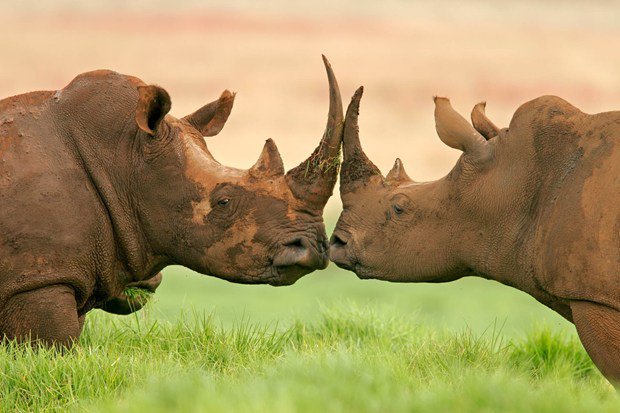
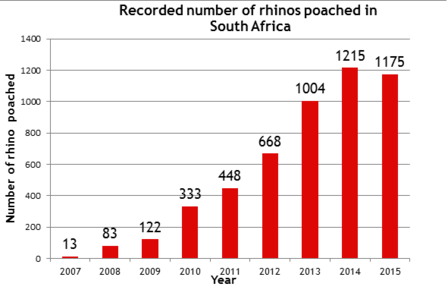
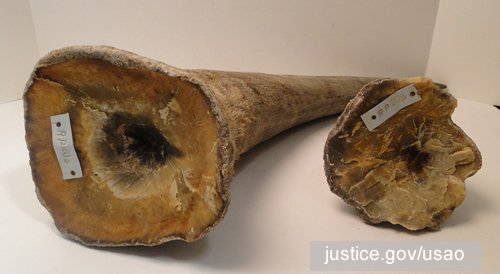

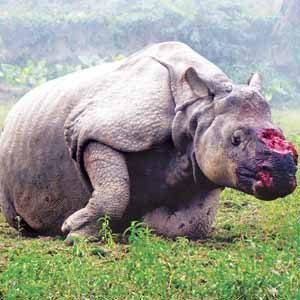
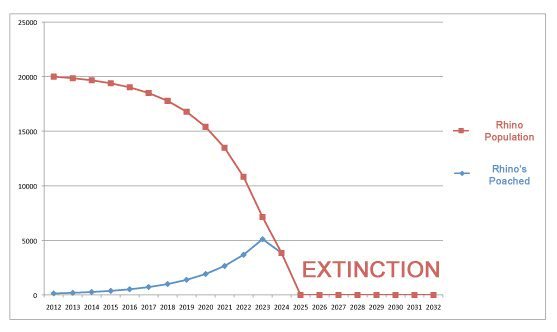
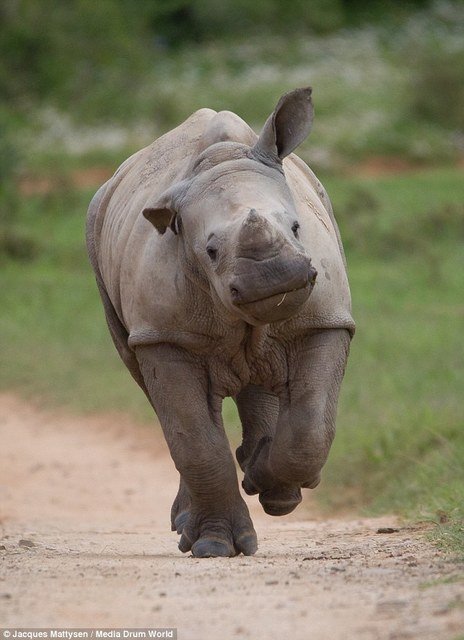
Living in South Africa, I have always had a little patience for people who start and have causes against rhino poaching. Out of all the charities, the project, the fund-raisers, the killing of rhinos for their horns has increased.
I used to support buying those bangles that supposedly give money to stop poaching, but have since ditched it.
My Solution: Legalize the sale of rhino horn. You will never stop the killing of rhinos no matter what you do. Accept that. If we all accept that some people have money to spend on a $1million rhino horn, then there is enough money to go around and make that happen.
If you allow the sale of rhino horn, the black market price instantly drops.
People will be breeding rhinos and selling their horns after the die. In fact, there is a farm in South Africa that breeds rhinos and allows for the killing of them. That sounds awful, until you realize the fact as long as the species can be profited from, in a legal and somewhat regulated space, rhinos will never go extinct.
People are always going to want rhino horn, with or without medical benefits. We are talking about cultures and traditions that will not be stopped. So instead of preventing them, lets ethically assist them in their ignorance and make legal money from them.
Legalize the sale of rhino horn, every park will be collecting the horn of dead rhinos and will sell it on because they can make money, a market demand is satisfied, and our great grandchildren can enjoy the beauty of these animals.
I agree, the more you donate to save the rhino, the more they get killed. It is like a vicious circle! There are different ways to save the rhino's. We must find the best possible solution. @frieda
For me, the best solution would be to allow the trade of horn. That will create a value-chain that is centered around the preservation and conservation of the rhino.
I fully agree with you, thanks for putting it into perspective like that! I'm sure there are global stockpiles of the horns, that are kept under huge security for obvious reasons. Perhaps starting by selling these legally to make it far more accessible to the 'end user' and will immediately act as a deterrent from taking the illegal route. Perhaps educating people on the horns and showing them that there is actually no benefit from using them, and giving them real medicine which actually works can change some traditions, albeit a few of them to start with. I believe the graphic videos and images that are available should be shown all over the world, similar to the way cancerous lungs and throats are shown on cigarette packets to create shock-factor awareness of the devastation caused. Thank you again for your thoughts!
Absolute pleasure. Thank you for sparking the conversation.
@ollie7 Thank you for this eye-opening article, I myself donate something to save the Rhino. The worst was the news a couple of years ago about the involvement of Veterinarians in killing the rhinos for their own financial gain. The rhinos are such gentle giants. Let's all get involved and save these incredible animals!
And we grew up with them, being privileged enough to go and see them whenever we wanted! And no, in South Africa they don't roam our city streets!